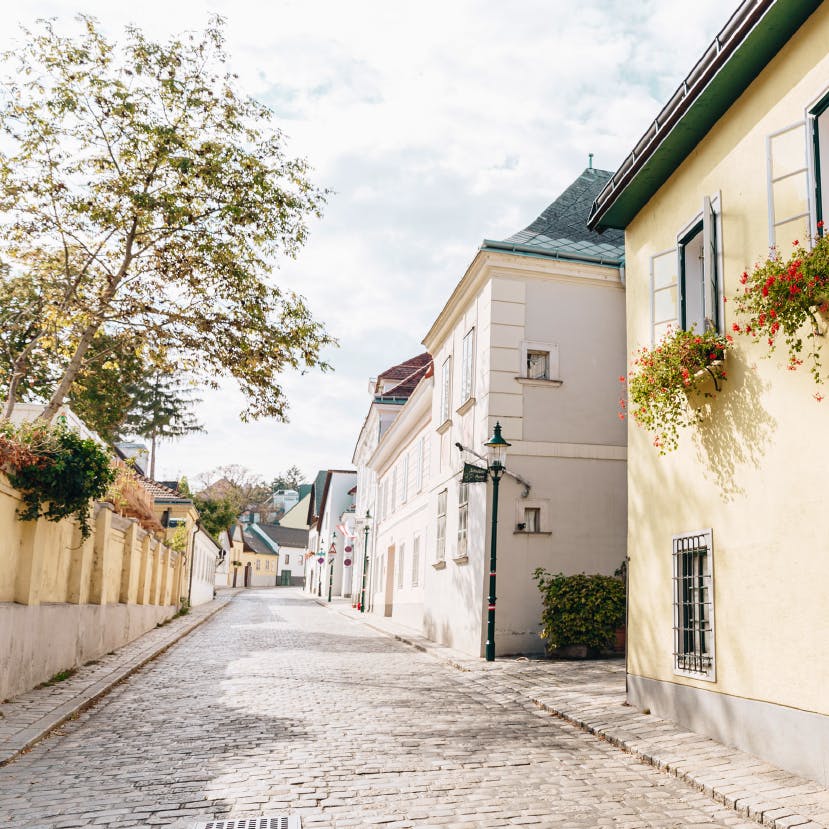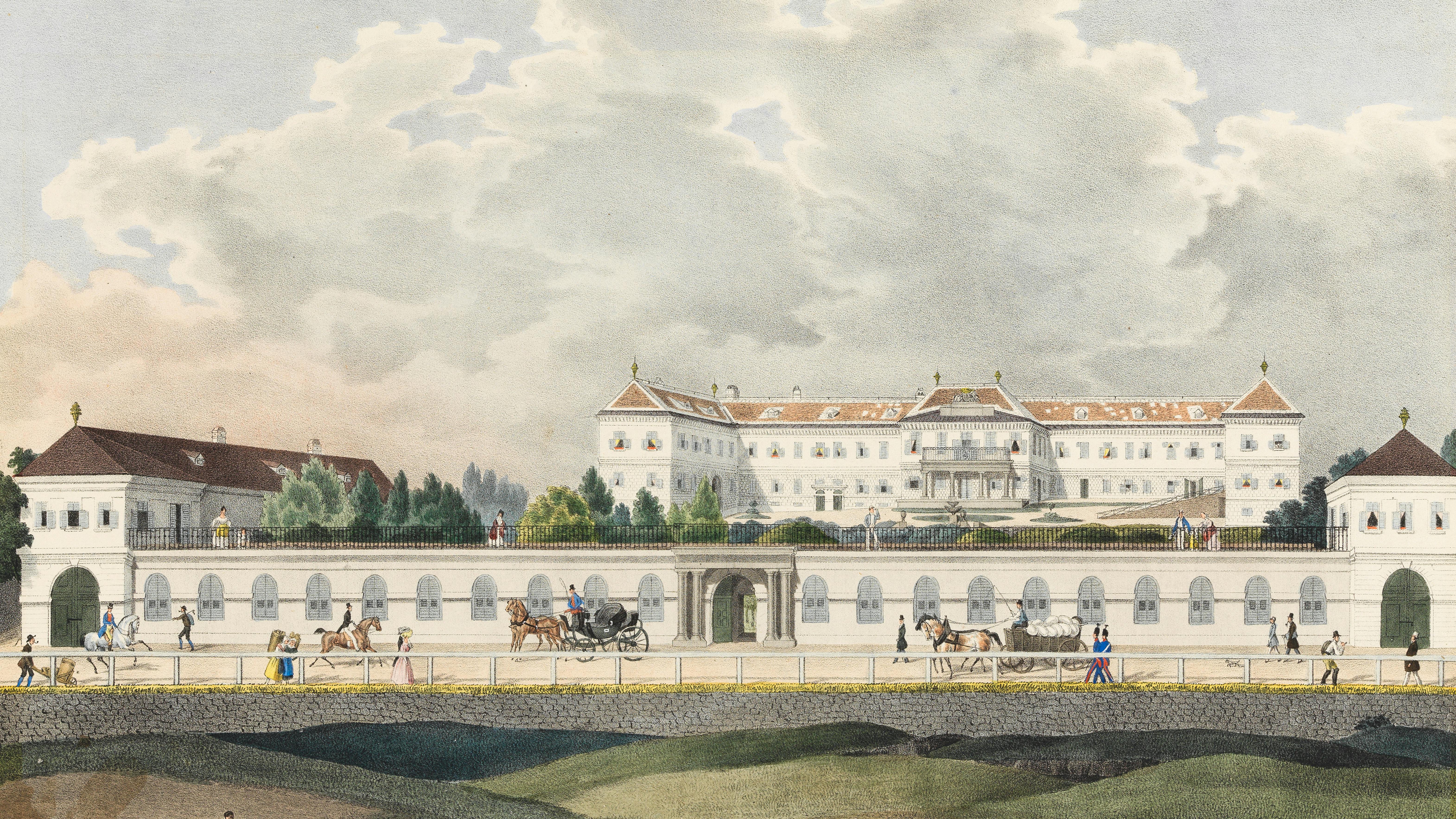
Location & History

Embedded between the city, vineyards, the vienna woods and the danube.
DirectionsThe charms of the wine village
Schlosspark Freihof lies in the heart of Nussdorf, in the exclusive and very green 19th district of Vienna. Thanks to its prime location between the city center, vineyards, the Vienna Woods and the Danube, the former wine village is one of Vienna’s most sought-after residential addresses. In winding, narrow streets, old wine-grower’s houses, idyllic courtyard gardens and breathtakingly beautiful Heuriger wine taverns, the tradition of winemaking lives on in its most original form.
Excellent schools, luxurious villas, numerous shops and outstanding restaurants provide for a premium living environment that leaves nothing to be desired. Residing and living in Nussdorf: From here, it doesn’t take long to get to Kahlenberg, one of the city’s most popular destinations, the vineyards with Heuriger wine taverns and the cycle paths along the Danube. Likewise, the city center and the regions surrounding Vienna can easily be reached by car or by public transport.

Gourmets and connoisseurs are exactly in the right place in Nussdorf. It is only a short walk from Schlosspark Freihof to a restaurant which is said to serve Vienna’s finest Tafelspitz. A Heuriger where you can enjoy romantic hours under enormous walnut trees on a pleasant summer evening is also just a few minutes away.
A palace rich in history
Schloss Freihof looks back on a rich history. It was first mentioned in a document as early as 1346. Originally named Altenburger Freihof, the manor was then part of Altenburg Abbey. Later, it changed hands several times and was mostly owned by aristocrats and bourgeois families. Merchant Andreas Edler von Fellner and the noble family Bachofen von Echt had the most significant impact on the palace’s history. Schloss Freihof, with its extensive corridors, prominent staircases and numerous historical architectural details, bears unmistakable witness to centuries of history.

From a winegrowing farm to a palace
In the 15th century, a wine-growing farm stood at the site of today’s palace. Cattle used to graze where an elegant park lies today. Back then, the estate was a free farm, a so-called Freihof – a circumstance to which it still owes its name today. In 1529, the time of the first Turkish siege of Vienna, the estate was destroyed by a fire.
The current appearance of the Freihof dates back to the early 19th century: Andreas Edler von Fellner, a merchant, acquired the premises and the palace for 20,000 gulden on August 13, 1800 and had it rebuilt in the neoclassical style. Fellner maintained close contact with the Esterházy noble family. It is therefore assumed that their French architect, Charles de Moreau, was responsible for rebuilding the Freihof in a quality which by far exceeded the customary standard at the time. Composer Ludwig van Beethoven also resided in the close vicinity. In the summer of 1802, he first lived in Probusgasse no. 6 and returned to Nussdorf many times throughout his life.

The Grillmayer era
From 1861 to 1871, the owner of the Freihof was Johann Grillmayer. He added several buildings to the palace grounds, including the connecting wing, which to this day closes off the garden grounds towards Heiligenstädter Straße, thus making the Freihof a closed ensemble.

Meeting point for vienna’s art avant-garde
Baron Karl Adolf Ludwig Bachofen von Echt, originally from Westphalia, took over the management of the Nussdorf brewery, which was located in the close vicinity of the Freihof, from his father-in-law, Franz Xaver Bosch, a Viennese brewery entrepreneur. The Bachofen family was originally domiciled in a little baroque palace in Hackhofergasse, where composer Franz Lehár would later reside. The Freihof itself was home to the Altenburger Weinstube (“Altenburger wine tavern”) at the time.
In 1903, Karl Adolf Bachofen von Echt acquired the palace with all its adjoining buildings and the extensive grounds. As he was a flamboyant personality and an art-loving patron like many of his aristocratic and bourgeois predecessors, the Freihof became a popular meeting place for the art community of Vienna. Egon Schiele and Gustav Klimt made drawings and paintings of the family members here, including the palace owner’s wife, Baroness Elisabeth Bachofen-Echt. The descendants of Karl Adolf later operated a beer brewery on the Freihof grounds.




